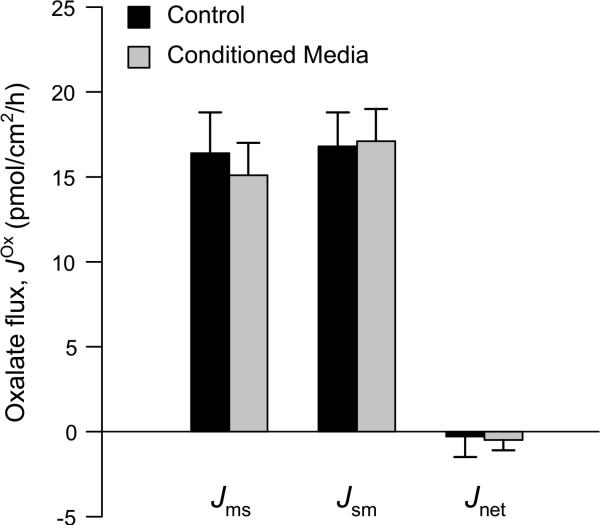Fig. 6.
Exposing human Caco-2 cell monolayers to ‘Conditioned Media’ (CM) from a culture of Oxalobacter formigenes does not significantly enhance oxalate transport. The unidirectional oxalate fluxes measured across cultured Caco-2 cell monolayers at either 11 or 28 days post-seeding under symmetrical, short-circuited conditions following prior mucosal (luminal) exposure to ‘conditioned media’ from an O/N culture of Oxalobacter strain HC-1 (1:50 dilution) for 18–24 h are shown alongside concurrent controls exposed to sterile media only. There were also no significant differences to the electrophysiological parameters. Short-circuit current (Isc) was −0.09 ± 0.02 μeq/cm2/h (control) compared to −0.09 ± 0.02 μeq/cm2/h (conditioned media), and transepithelial conductance (GT) was 6.2 ± 0.4 mS/cm2 (control) compared to 6.4 ± 0.3 mS/cm2 (conditioned media). The data represent the mean SE from a total of n = 16 and n = 20 GT-matched pairs of monolayers for the control ± and conditioned media treatments, respectively. Further details are available in the supplementary material. There were no statistically significant differences between any of the transport characteristics of monolayers at 11 days compared to 28 days post-seeding; hence, monolayers from these two time points were combined to produce this figure

